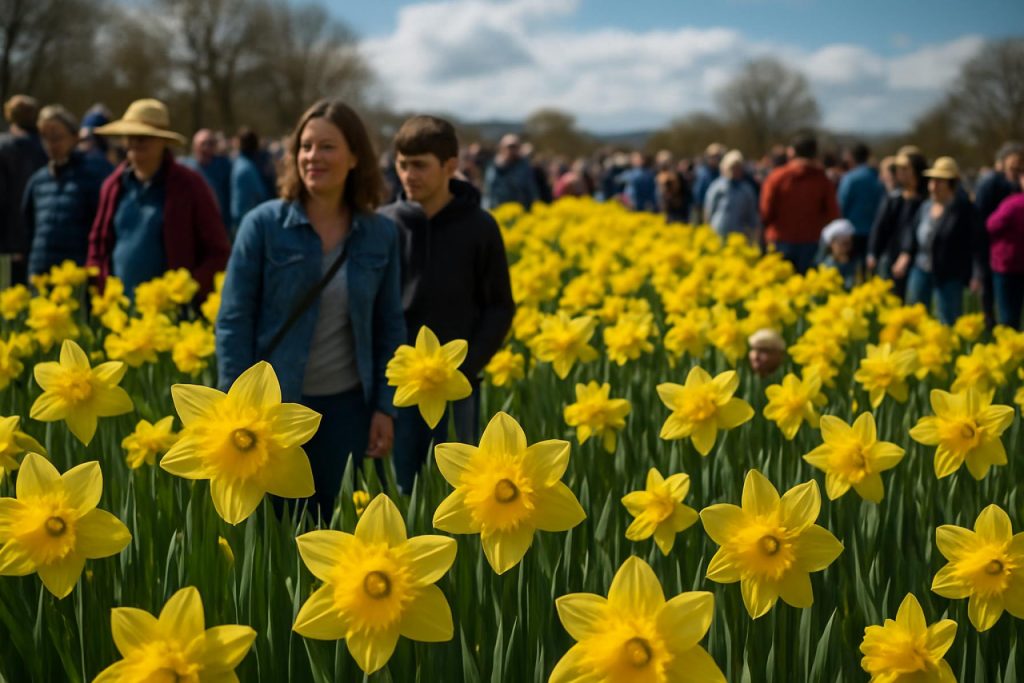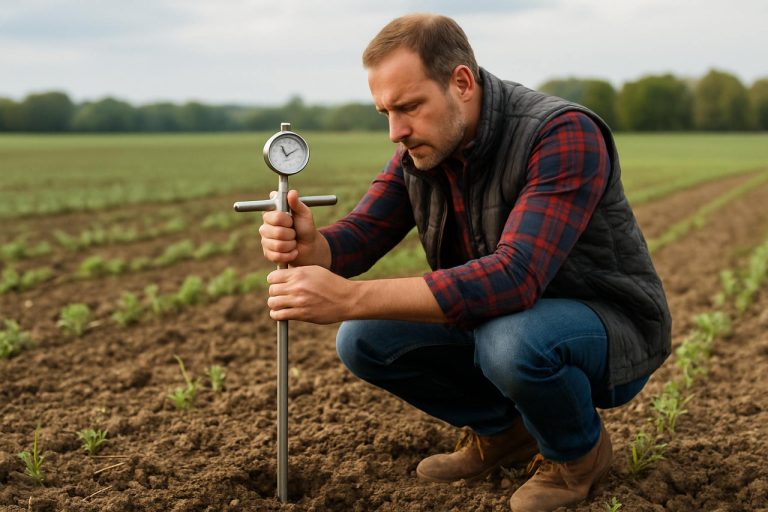
Discover the Magic of Daffodil Festivals: A Deep Dive into Spring’s Most Celebrated Bloom and the Communities That Bring It to Life. Explore the History, Culture, and Future of These Blossoming Events. (2025)
- Origins and History of Daffodil Festivals
- Global Hotspots: Where Daffodil Festivals Bloom
- Signature Events and Unique Traditions
- Economic and Tourism Impact of Daffodil Festivals
- Daffodil Varieties: Horticultural Highlights
- Community Engagement and Volunteerism
- Sustainability and Environmental Practices
- Technology in Festival Planning and Promotion
- Forecasting Growth: Public Interest and Attendance Trends
- The Future of Daffodil Festivals: Innovations and Challenges
- Sources & References
Origins and History of Daffodil Festivals
Daffodil festivals have a rich and varied history, rooted in the cultural and horticultural appreciation of the daffodil flower (Narcissus), which is celebrated for its vibrant yellow blooms and symbolism of renewal and hope. The tradition of honoring daffodils through organized festivals can be traced back to the early 20th century, particularly in regions where the flower is both native and widely cultivated. The United Kingdom, with its long-standing horticultural societies and deep appreciation for springtime blooms, played a significant role in popularizing daffodil celebrations. The Royal Horticultural Society, established in 1804, has been instrumental in promoting daffodil cultivation and organizing flower shows that often feature daffodil displays, helping to inspire local communities to create their own festivals.
In North America, daffodil festivals began to emerge in the early 1900s, coinciding with the expansion of public parks and the growing popularity of community gardening. One of the earliest and most prominent examples is the City of Tacoma’s Daffodil Festival in Washington State, which originated in 1934 as a celebration of the region’s burgeoning bulb industry. The festival was conceived to boost morale during the Great Depression and to showcase the agricultural success of local daffodil growers. Over time, it evolved into a major annual event featuring parades, community gatherings, and educational activities centered around the daffodil.
Daffodil festivals have since spread to various countries, adapting to local customs and horticultural traditions. In Canada, the Canadian Cancer Society adopted the daffodil as a symbol of hope in the fight against cancer, leading to the establishment of Daffodil Month and related events across the country. These festivals often serve dual purposes: celebrating the beauty of spring and raising funds for charitable causes. In Australia, daffodil festivals are held in regions such as Victoria and New South Wales, where the flower thrives in temperate climates, and are often linked to community fundraising and awareness campaigns.
The enduring appeal of daffodil festivals lies in their ability to unite communities, mark the arrival of spring, and support meaningful causes. Their origins reflect a blend of horticultural enthusiasm, cultural symbolism, and civic pride, making them a cherished tradition in many parts of the world.
Global Hotspots: Where Daffodil Festivals Bloom
Daffodil festivals are celebrated worldwide, marking the arrival of spring and showcasing the vibrant beauty of Narcissus blooms. These festivals not only highlight horticultural excellence but also foster community spirit, tourism, and cultural heritage. Several regions have become renowned global hotspots for their spectacular daffodil displays and associated festivities.
In the United Kingdom, daffodils are deeply embedded in national identity, particularly in Wales, where the flower is a national symbol. The National Trust manages numerous historic gardens and estates that host annual daffodil events, such as the celebrated displays at Bodnant Garden and Stourhead. These festivals often include guided walks, educational workshops, and family-friendly activities, drawing thousands of visitors each spring.
The United States is home to several prominent daffodil festivals. The Nantucket Daffodil Festival in Massachusetts is a hallmark event, featuring parades, flower shows, and vintage car displays. On the West Coast, the Pierce County region in Washington State hosts the Daffodil Festival Parade, a tradition since 1934, which winds through multiple cities and celebrates the area’s agricultural heritage. These events are supported by local governments and horticultural societies, emphasizing both community pride and environmental stewardship.
In Canada, the Niagara Parks system in Ontario is famous for its springtime daffodil displays, particularly along the Niagara Parkway. The region’s climate and soil conditions are ideal for cultivating a wide variety of daffodil species, making it a key destination for flower enthusiasts.
Australia also boasts significant daffodil festivals, particularly in the state of Victoria. The Visit Victoria tourism authority promotes events such as the Kyneton Daffodil and Arts Festival, which combines floral displays with art exhibitions, music, and local food. These festivals play a vital role in supporting regional tourism and celebrating the end of winter in the Southern Hemisphere.
Globally, daffodil festivals serve as important cultural and economic events, uniting communities and attracting visitors from around the world. Their enduring popularity underscores the universal appeal of the daffodil as a symbol of renewal and hope.
Signature Events and Unique Traditions
Daffodil festivals, celebrated in various regions worldwide, are renowned for their vibrant signature events and unique traditions that highlight the cultural and horticultural significance of the daffodil flower. These festivals typically coincide with the blooming season of daffodils, transforming parks, gardens, and entire communities into seas of yellow and white blossoms. Among the most prominent is the National Trust’s annual daffodil displays across the United Kingdom, where historic estates and gardens host guided walks, photography competitions, and educational workshops centered on the flower’s history and cultivation.
In the United States, the City of Sumner in Washington State is home to the Daffodil Festival, a tradition dating back to 1934. The festival’s signature event is the Grand Floral Parade, which features elaborately decorated floats adorned with thousands of fresh daffodils, marching bands, and community groups. The parade travels through multiple cities in Pierce County, uniting communities in celebration of the region’s agricultural heritage. Another notable tradition is the crowning of the Daffodil Festival Queen, a role that emphasizes youth leadership and community service.
In Canada, the Canadian Cancer Society has long used the daffodil as a symbol of hope in its annual Daffodil Campaign, which often coincides with local daffodil festivals. These events include fundraising walks, daffodil sales, and awareness activities, blending floral celebration with charitable purpose. Similarly, in Australia, the Cancer Council organizes Daffodil Day, a nationwide event that incorporates daffodil-themed festivals, art installations, and community gatherings to support cancer research and patient care.
- Floral Displays: Many festivals feature meticulously designed daffodil gardens, bulb-planting demonstrations, and flower arranging contests.
- Parades and Pageantry: Floats, costumes, and the selection of festival royalty are common, fostering local pride and intergenerational participation.
- Art and Music: Live performances, craft fairs, and art exhibitions inspired by daffodils are integral to the festivities.
- Community Engagement: Educational programs, charity fundraisers, and volunteer opportunities are woven into the festival fabric, reinforcing the daffodil’s role as a symbol of renewal and hope.
These signature events and traditions not only celebrate the beauty of the daffodil but also strengthen community bonds, support charitable causes, and promote environmental stewardship, ensuring the enduring appeal of daffodil festivals worldwide.
Economic and Tourism Impact of Daffodil Festivals
Daffodil festivals, celebrated annually in various regions renowned for their springtime blooms, have become significant drivers of local economies and tourism. These festivals, often held in areas with a rich tradition of daffodil cultivation such as the United States, the United Kingdom, and the Netherlands, attract thousands of visitors each year, generating substantial revenue for host communities. The economic impact of daffodil festivals is multifaceted, encompassing direct spending on accommodations, dining, transportation, and festival-related activities, as well as indirect benefits to local businesses and agricultural producers.
In the United States, prominent events like the Nantucket Daffodil Festival and the Washington State Daffodil Festival draw visitors from across the country. These festivals typically feature parades, flower shows, art exhibitions, and local markets, providing a platform for small businesses and artisans to showcase their products. According to the National Gallery of Art, flower festivals contribute to cultural tourism by promoting appreciation for horticulture and the arts, further enhancing the appeal of these destinations.
The tourism impact extends beyond the immediate festival period. Many visitors plan extended stays to explore local attractions, nature reserves, and historical sites, resulting in increased occupancy rates for hotels and higher patronage of restaurants and shops. The National Trust, a major conservation organization in the UK, notes that daffodil festivals held at historic estates and gardens help fund ongoing preservation efforts through ticket sales and donations, illustrating the symbiotic relationship between tourism and heritage conservation.
Agricultural communities also benefit from the heightened demand for daffodils and related products during festival season. Growers supply millions of blooms for displays, competitions, and retail sales, supporting local employment and sustaining traditional horticultural practices. In the Netherlands, the world’s leading exporter of flower bulbs, daffodil festivals coincide with peak bloom periods, attracting international tourists and bolstering the country’s reputation as a floral destination. The Government of the Netherlands actively promotes flower tourism as part of its broader strategy to support rural economies and cultural heritage.
Overall, daffodil festivals serve as vital economic engines for their host regions, fostering community pride, supporting local businesses, and attracting visitors from near and far. Their continued success underscores the enduring appeal of seasonal celebrations that blend natural beauty, cultural heritage, and economic opportunity.
Daffodil Varieties: Horticultural Highlights
Daffodil festivals are vibrant annual celebrations that showcase the beauty and diversity of daffodil varieties, drawing horticultural enthusiasts, local communities, and tourists alike. These festivals typically occur in early to mid-spring, coinciding with the peak blooming period of daffodils, and serve as important platforms for education, conservation, and appreciation of this iconic flower. The events often feature extensive displays of daffodil cultivars, ranging from classic yellow trumpets to rare and novel hybrids, highlighting the horticultural achievements of breeders and the rich genetic diversity within the genus Narcissus.
One of the most renowned daffodil festivals is the annual event organized by the American Daffodil Society, a leading authority dedicated to the study, cultivation, and promotion of daffodils in the United States. Their festivals and shows provide opportunities for growers to exhibit their finest blooms, compete in judged categories, and exchange knowledge about cultivation techniques and new varieties. Similarly, the Royal Horticultural Society in the United Kingdom, a globally respected horticultural organization, hosts daffodil shows and festivals that attract international participation and set standards for daffodil classification and judging.
Daffodil festivals are not only horticultural showcases but also community events that often include guided garden tours, educational workshops, bulb sales, and family-friendly activities. These festivals play a crucial role in raising public awareness about the importance of plant diversity and conservation. For example, many festivals collaborate with botanical gardens and conservation groups to highlight endangered or heritage daffodil varieties, emphasizing the need to preserve genetic resources for future generations.
The horticultural highlights of these festivals often include displays of award-winning cultivars, demonstrations of hybridization techniques, and presentations on the history and symbolism of daffodils. Attendees can learn about the latest trends in daffodil breeding, such as the development of multi-flowered stems, novel color patterns, and improved disease resistance. The festivals also provide a marketplace for specialty bulbs, allowing gardeners to access rare and unusual varieties that may not be available through mainstream retailers.
Through their focus on daffodil varieties and horticultural excellence, daffodil festivals foster a deeper appreciation for this beloved spring flower and support the ongoing work of organizations like the American Daffodil Society and the Royal Horticultural Society in advancing the science and enjoyment of daffodils worldwide.
Community Engagement and Volunteerism
Daffodil festivals, celebrated in various regions renowned for their springtime blooms, are deeply rooted in community engagement and volunteerism. These festivals, such as those organized by the American Cancer Society and the National Trust in the United Kingdom, rely heavily on the active participation of local residents, civic groups, and volunteers to ensure their success. Community members often contribute by planting daffodil bulbs in public spaces, maintaining festival grounds, and coordinating event logistics, fostering a sense of shared purpose and local pride.
Volunteerism is a cornerstone of daffodil festivals, with individuals of all ages dedicating their time to support a variety of activities. These range from guiding visitors through daffodil displays and managing information booths to organizing educational workshops and children’s activities. In many cases, local schools, gardening clubs, and service organizations collaborate to provide volunteers, strengthening intergenerational ties and promoting environmental stewardship. For example, the American Cancer Society’s Daffodil Days campaign mobilizes thousands of volunteers annually to distribute daffodils and raise funds for cancer research and patient support services.
The festivals also serve as platforms for community fundraising and charitable initiatives. Proceeds from daffodil sales and festival events are frequently directed toward local health organizations, conservation projects, or community improvement efforts. This philanthropic aspect not only benefits the immediate community but also raises awareness about broader causes, such as cancer prevention and environmental conservation. The National Trust, for instance, uses daffodil festivals to engage the public in heritage preservation and landscape restoration projects across the UK.
Moreover, daffodil festivals foster a spirit of inclusivity and cultural celebration. They often feature parades, art exhibitions, and performances that highlight local traditions and talents, encouraging participation from diverse community groups. The collaborative nature of these events helps build lasting relationships among residents, local businesses, and civic leaders, reinforcing the social fabric of the community. In 2025, as communities continue to recover from recent global challenges, the role of volunteer-driven festivals like these is expected to be even more significant in promoting resilience, well-being, and collective identity.
Sustainability and Environmental Practices
Daffodil festivals, celebrated in various regions renowned for their springtime blooms, are increasingly integrating sustainability and environmental stewardship into their core operations. As these festivals attract thousands of visitors annually, organizers recognize the importance of minimizing ecological footprints while promoting the appreciation of nature’s beauty. Many daffodil festivals are held in partnership with local horticultural societies, botanical gardens, and conservation organizations, which play a pivotal role in shaping environmentally responsible practices.
A central aspect of sustainability at daffodil festivals is the cultivation and maintenance of daffodil fields. Organizers often collaborate with horticultural experts to implement eco-friendly growing techniques, such as integrated pest management, organic fertilization, and water conservation strategies. These methods help preserve soil health, protect pollinators, and reduce chemical runoff into local waterways. For example, the Royal Horticultural Society, a leading authority in plant science and gardening, advocates for sustainable gardening practices and provides guidance to festival planners on environmentally sound cultivation.
Waste reduction is another key focus. Many festivals have adopted comprehensive recycling and composting programs, encouraging visitors to dispose of waste responsibly. Single-use plastics are being phased out in favor of biodegradable or reusable alternatives at food stalls and vendor booths. Additionally, some festivals partner with local environmental groups to organize post-event cleanups, ensuring that public spaces remain pristine and wildlife habitats are protected.
Transportation to and from festival sites is also addressed through sustainability initiatives. Organizers often promote the use of public transit, cycling, or shuttle services to reduce carbon emissions associated with private vehicle use. In some cases, partnerships with local transit authorities provide discounted fares or special routes during festival periods, further incentivizing eco-friendly travel.
Education and community engagement are integral to the environmental mission of daffodil festivals. Many events feature workshops, guided nature walks, and informational displays on topics such as native plant conservation, pollinator health, and climate change adaptation. These activities, often developed in collaboration with organizations like the National Trust, aim to inspire visitors to adopt sustainable practices in their own gardens and communities.
By embedding sustainability and environmental awareness into their programming, daffodil festivals not only celebrate the arrival of spring but also foster a culture of stewardship and respect for the natural world. These efforts ensure that the beauty of daffodils can be enjoyed by future generations while supporting broader ecological health.
Technology in Festival Planning and Promotion
Technology has become an integral part of planning and promoting Daffodil Festivals, enhancing both organizational efficiency and visitor engagement. In 2025, festival organizers are leveraging a range of digital tools to streamline logistics, reach broader audiences, and create interactive experiences that celebrate the iconic daffodil bloom.
One of the most significant advancements is the use of specialized event management software. These platforms allow organizers to coordinate schedules, manage vendor applications, and track ticket sales in real time. For example, many festivals now utilize cloud-based systems to centralize volunteer coordination and automate communication, ensuring that large-scale events run smoothly even with hundreds of participants and multiple venues.
Promotion has also evolved with the rise of social media and digital marketing. Daffodil Festivals increasingly rely on platforms such as Instagram and Facebook to share vibrant images of blooming fields, announce event schedules, and engage with potential visitors. Hashtag campaigns and live-streamed tours enable festivals to reach global audiences, fostering a sense of community among daffodil enthusiasts worldwide. Additionally, official festival websites often feature interactive maps, downloadable guides, and online ticketing, making it easier for attendees to plan their visits and access up-to-date information.
Mobile applications are another technological innovation transforming the festival experience. Some Daffodil Festivals offer dedicated apps that provide real-time updates on bloom status, weather conditions, and event programming. These apps may include augmented reality features, allowing users to identify daffodil varieties or participate in virtual scavenger hunts, thereby enhancing educational and entertainment value for visitors of all ages.
Sustainability and accessibility are also being addressed through technology. Digital ticketing reduces paper waste, while online accessibility tools—such as screen reader compatibility and multilingual content—ensure that festival information is available to a diverse audience. Furthermore, data analytics help organizers assess visitor flow and preferences, enabling continuous improvement in festival design and resource allocation.
Many Daffodil Festivals are organized or supported by horticultural societies and botanical gardens, such as the Royal Horticultural Society and the United States National Arboretum. These organizations often provide digital resources, educational content, and event listings, further amplifying the reach and impact of Daffodil Festivals through their official channels.
Forecasting Growth: Public Interest and Attendance Trends
Daffodil festivals, celebrated in various regions renowned for their springtime blooms, have become significant cultural and tourism events. Forecasting growth in public interest and attendance for these festivals in 2025 involves analyzing historical trends, current promotional efforts, and broader societal factors influencing event participation. Traditionally, daffodil festivals in locations such as the United States, Canada, the United Kingdom, and Australia attract tens of thousands of visitors annually, with some of the largest events organized by local horticultural societies, tourism boards, and community organizations.
Recent years have seen a resurgence in outdoor and nature-based events, partly driven by increased public appreciation for open-air gatherings and floral displays. For example, the Royal Horticultural Society in the UK, a leading authority in horticulture, has reported growing attendance at flower shows and garden festivals, reflecting a broader trend of rising interest in botanical events. Similarly, the National Trust, which manages numerous gardens and estates hosting daffodil displays, has observed heightened visitor numbers during peak bloom periods.
Looking ahead to 2025, several factors are expected to drive further growth in public interest and attendance at daffodil festivals. First, the increasing emphasis on local tourism and community events is likely to boost participation, as travelers seek accessible, family-friendly experiences. Second, the integration of educational programs, art installations, and sustainability initiatives into festival programming is broadening the appeal beyond traditional gardening enthusiasts. Organizations such as the American Horticultural Society and the Royal Horticultural Society have expanded their outreach and event offerings to engage diverse audiences, including younger generations and school groups.
- Enhanced digital marketing and social media campaigns are increasing festival visibility and engagement, making it easier for potential attendees to discover and plan visits.
- Collaborations with local businesses and tourism agencies are creating package experiences, further incentivizing attendance.
- Climate and weather patterns remain a variable, but advances in horticultural planning and event scheduling are helping organizers optimize bloom timing and visitor experience.
Based on these trends, industry experts and festival organizers anticipate a steady increase in attendance for daffodil festivals in 2025, with some events projecting record-breaking visitor numbers. The continued support from horticultural organizations and the adaptability of festival programming are key factors underpinning this optimistic outlook.
The Future of Daffodil Festivals: Innovations and Challenges
Daffodil festivals, long celebrated for their vibrant displays and community spirit, are evolving in response to changing societal, environmental, and technological landscapes. As these festivals look toward 2025 and beyond, organizers are embracing innovations while confronting significant challenges to ensure their continued relevance and sustainability.
One of the most notable trends shaping the future of daffodil festivals is the integration of digital technology. Many festivals are adopting virtual and hybrid event formats, allowing broader participation from those unable to attend in person. Interactive online tours, live-streamed flower shows, and digital workshops on horticulture are becoming increasingly common, expanding the reach and educational impact of these events. This digital shift not only enhances accessibility but also provides new opportunities for engagement and revenue generation.
Sustainability is another central focus for the future of daffodil festivals. Organizers are prioritizing environmentally responsible practices, such as reducing single-use plastics, promoting public transportation, and sourcing locally grown bulbs. These efforts align with broader goals set by organizations like the Royal Horticultural Society, which advocates for sustainable gardening and community engagement. By adopting eco-friendly measures, festivals aim to minimize their environmental footprint and inspire visitors to adopt similar practices in their own gardens.
Climate change presents a significant challenge for daffodil festivals worldwide. Shifts in weather patterns can affect bloom times and the health of daffodil crops, potentially disrupting festival schedules and displays. To address this, horticultural experts and festival planners are collaborating on research and adaptation strategies, such as selecting resilient daffodil varieties and adjusting planting schedules. Institutions like the Royal Horticultural Society provide guidance on climate-resilient gardening, supporting festival organizers in navigating these uncertainties.
Community involvement remains a cornerstone of daffodil festivals, but changing demographics and interests require innovative approaches to engagement. Many festivals are expanding their programming to include art installations, culinary events, and educational activities for all ages. Partnerships with local schools, businesses, and cultural organizations help foster a sense of ownership and ensure the festival’s continued relevance to diverse audiences.
Looking ahead, the future of daffodil festivals will depend on the ability of organizers to balance tradition with innovation. By leveraging technology, prioritizing sustainability, and adapting to environmental and social changes, these beloved events can continue to thrive and inspire communities for generations to come.
Sources & References
- Royal Horticultural Society
- Canadian Cancer Society
- National Trust
- Niagara Parks
- Canadian Cancer Society
- Cancer Council
- National Gallery of Art
- American Daffodil Society
- American Cancer Society
- Royal Horticultural Society



